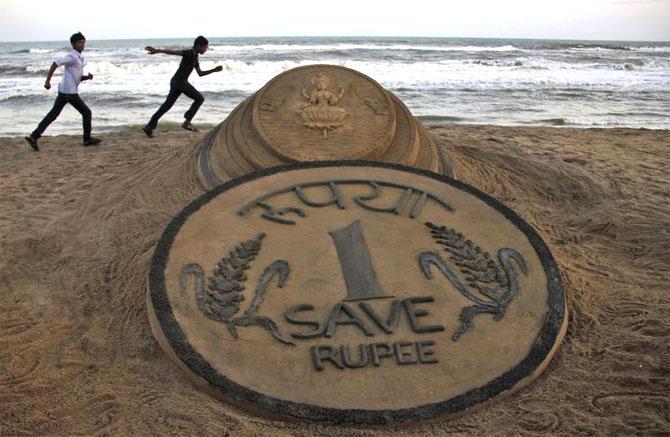 Fluctuations are among the biggest downsides of an open economy.
Fluctuations are among the biggest downsides of an open economy.
The value of a currency can change on a minute-by-minute basis.
One of the main advantages of an open economy is the greater opportunity for trade and trade involves continuously pricing and comparing goods.
Currency value changes make this a difficult task. India is not an open economy but it has gradually edged closer and closer to being open.
Somewhat over 40 per cent of India's GDP involves trade in the form of either exports or imports. In almost every manufacturing sector, domestically produced goods have to compete with their foreign equivalents.
This has some interesting consequences. There are some segments where the domestic manufacturer has a large competitive advantage.
For example, cement manufacturers are unlikely to be challenged by imports. There are other areas where the overseas manufacturers have large advantages -for example, almost all electronic components are imported from South East Asia. But there are a large number of segments where domestic and imported items are roughly competitive with each other.
Changes in customs duties can afford protection to the domestic manufacturer (or remove protection). Having an edge in the marketing and distribution network can also give an advantage. And swings in currency rates can also change the competitiveness. Every change in domestic interest rates usually leads to a change in the currency rates as well.
The direct impact of lower (or higher) policy rates on the domestic economy is well understood and usually discussed at great length when the RBI cuts (or raises) policy rates. However, if a change in policy rates leads to a change in currency rates, there is another important impact and that is not discussed in such detail.
There are several models that try to value currencies in terms of interest rate parities.
At its broadest, currency rates should reflect long-term interest yields. Say, for example, that the dollar-rupee rate is 60 and the one-year dollar treasury bill is at a yield of 2.4 per cent while the equivalent rupee yield is at 8.5 per cent.
A year down the line, $1.024 will be worth Rs 65.1 because those are the respective returns and it is possible to convert one currency to another without much trouble.
Hence, the one-year forward rate should reflect this interest rate differential. The complications arise because of differences in inflation rates and, hence, differences in real interest rates, differences in relative ease of conversion, short-term demands for one currency or another, etc. The currency market reflects the consensus opinion about such factors.
Other things being more or less discounted, a rate cut in one currency can trigger some depreciation in the value of that currency.
This is actually an interesting situation that could affect India at the moment. A policy rate cut may make it easier for Indian corporations to raise money domestically.
It might also stimulate consumer demand for goods and services. But if it also leads to rupee depreciation it will make it more difficult for corporations to import and it will make it more difficult to repay outstanding overseas demand. Of course, depreciation will make Indian exports more competitive.
Conversely a rate hike may have positive effects if it triggers currency appreciation.
Importers have an easier time and corporation with external debt obligations find it easier to meet commitments.
The RBI has to take these effects into account since Indian corporations do have significant overseas debt.
The central bank presumably has some sort of stress test model where it assesses the likely effect on the rupee and on overseas debt everytime there is a change in policy rates.
The stock market probably ignores this effect entirely in the short run. The impact of a rate cut is almost always seen to be broadly positive.
In fact, there may be negative effects if there are a large number of corporations with external debt. The RBI has chosen not to touch rates in this policy review. The next time it does change policy rates, bear the currency effect in mind.











